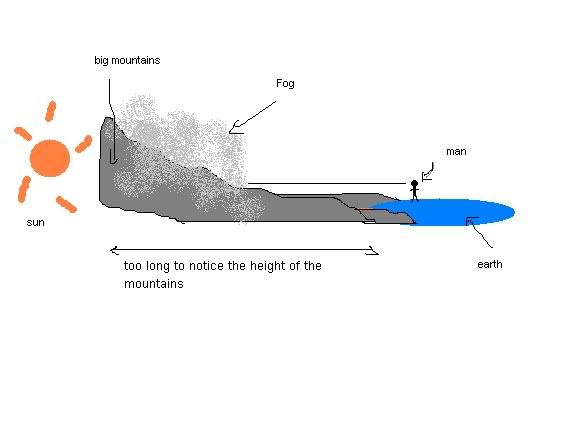ok.. i came up with this theory about day and night.. (and i do believe the earth is flat)
so basically its like this

Huge mountains on one side of the flat earth,, maybe an extension of the ice wall (and the earth maybe larger than we think!!).. and that might explain why we dont see the ice wall as well. So as the earth spins.. the mountains block the sun light resulting night! simple as that ;]

and thats how we dont see those mountains in my opinion (based on 1 years and a half of studies)
thoughts?